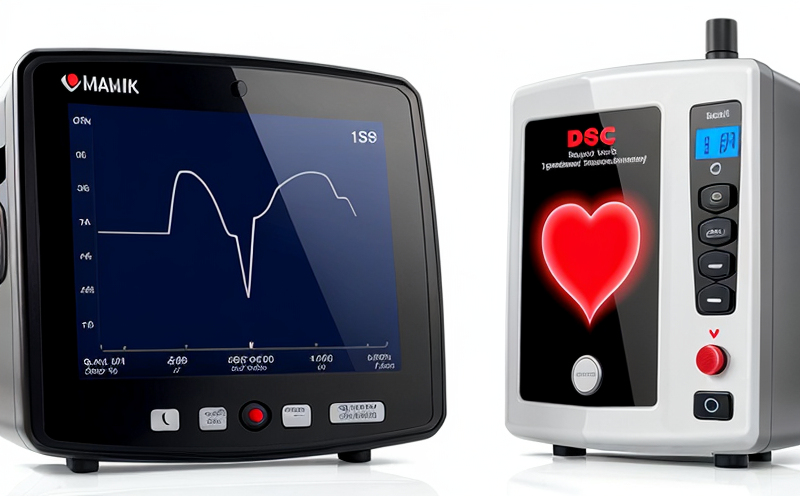ISO 25539-3 Vena Cava Filter Migration Resistance Testing
The ISO 25539 series of standards is specifically designed for the evaluation and certification of vena cava filters, a critical component in the treatment of deep vein thrombosis (DVT) and pulmonary embolism. The third part of this standard focuses on migration resistance testing, which assesses the stability and integrity of the filter under various mechanical stresses that simulate real-world conditions.
The test is performed to ensure that the vena cava filter remains securely in place within the venous system without migrating into a position where it could cause harm. This includes preventing movement towards the heart or other vital organs, which could lead to severe complications such as pulmonary embolism or damage to adjacent structures.
The testing process involves subjecting the vena cava filter to specific mechanical forces that mimic the physiological environment in which the filter is intended to operate. The apparatus used for this test typically consists of a specialized fixture designed to simulate the pull and torque forces exerted on the filter by blood flow and other factors.
The specimen preparation involves attaching the filter to the appropriate fixture, ensuring it is securely fastened before applying mechanical stresses. The acceptance criteria for successful testing are defined in ISO 25539-3 and involve measuring the amount of displacement or migration of the filter under specified load conditions without compromising its structural integrity.
The test parameters include the type of mechanical force applied, the duration of application, and the specific points at which measurements are taken. These parameters are carefully selected to reflect real-world conditions that might cause the filter to migrate. The results of this testing provide critical insights into the design and manufacturing quality of the vena cava filter, ensuring patient safety and compliance with regulatory requirements.
For R&D engineers, this test is essential for optimizing the design and performance of new vena cava filters. Compliance officers can rely on these tests to ensure their products meet international standards, thereby maintaining a high level of quality and reliability in the market. For quality managers and procurement specialists, it offers assurance that the components they are sourcing or producing conform to stringent safety and efficacy guidelines.
Why Choose This Test
The ISO 25539-3 Vena Cava Filter Migration Resistance Testing is an indispensable part of the quality assurance process for medical device manufacturers. It ensures that vena cava filters are not only safe but also reliable, which is crucial given their role in preventing life-threatening conditions such as pulmonary embolism.
- It provides a standardized method for evaluating the migration resistance of vena cava filters under controlled conditions.
- The test helps manufacturers identify potential design flaws or manufacturing defects early in the development process.
- By adhering to this standard, companies can demonstrate their commitment to patient safety and regulatory compliance.
- The results from these tests are widely accepted by regulatory bodies around the world, ensuring smoother market access for medical devices.
Choosing this test not only enhances product quality but also contributes to maintaining a strong reputation in the industry. It is a critical step towards achieving FDA approval and other international certifications that are essential for marketing medical devices globally.
Customer Impact and Satisfaction
The ISO 25539-3 Vena Cava Filter Migration Resistance Testing significantly impacts customer satisfaction by ensuring that the vena cava filters they use are safe, reliable, and effective. Patients who undergo procedures involving these devices can rest assured knowing that rigorous testing has been conducted to verify their performance under various conditions.
For healthcare providers, this test translates into increased confidence in using the latest medical technologies, leading to better patient outcomes. Hospitals and clinics can trust that the products they purchase meet stringent quality standards, which is essential for maintaining high levels of care and service.
The test also has a positive impact on regulatory bodies, as it supports their efforts to ensure public health and safety. By requiring compliance with ISO 25539-3, these organizations can enforce higher industry standards, ultimately benefiting patients worldwide.
Use Cases and Application Examples
| Use Case | Application Example |
|---|---|
| Evaluation of filter design for new medical devices. | Testing a newly developed vena cava filter to ensure it meets migration resistance standards before market release. |
| Detection of manufacturing defects in existing models. | Identifying issues with an existing model that might have escaped initial quality checks by conducting additional migration resistance tests. |
| Optimization of filter design for better patient outcomes. | Adjusting the design parameters based on test results to improve the stability and effectiveness of vena cava filters. |
| Ensuring compliance with international standards. | Conducting ISO 25539-3 tests as part of a broader quality assurance program aimed at meeting FDA, EU, and other regulatory requirements. |
- Treatment of deep vein thrombosis (DVT) in patients with high-risk conditions.
- Prevention of pulmonary embolism in post-surgery patients who are at risk of clot formation.
- Maintenance of blood flow within the venous system to prevent blockages and related complications.
The successful outcome of this test can lead to increased patient trust, improved treatment outcomes, and enhanced overall satisfaction with healthcare services.





